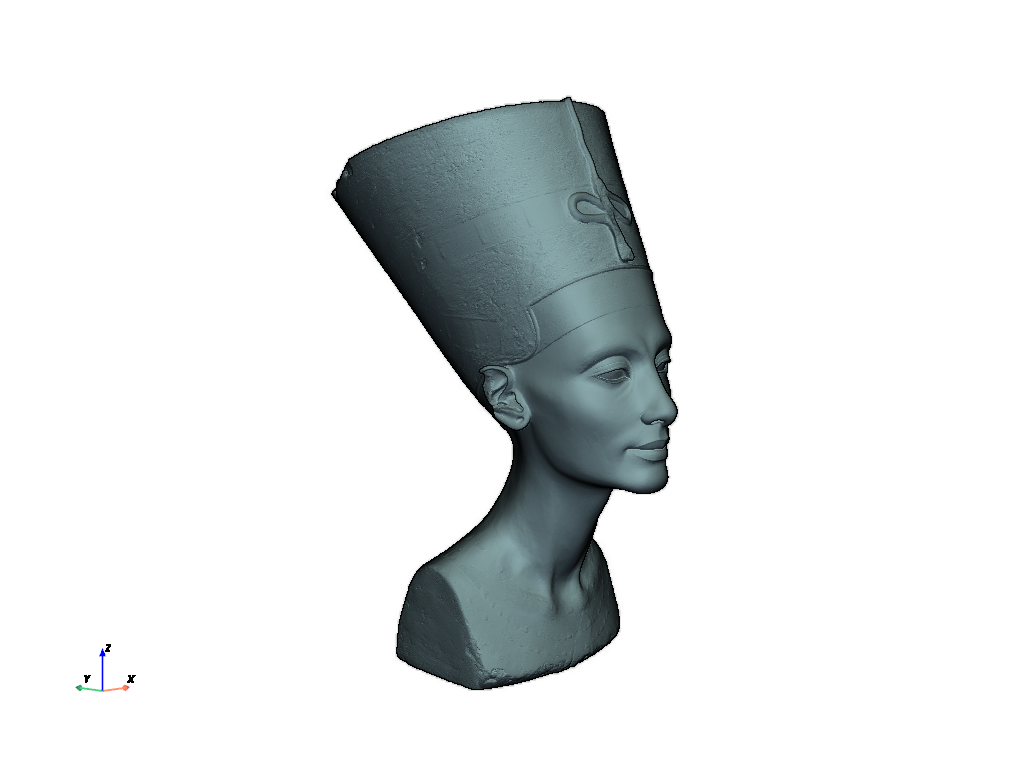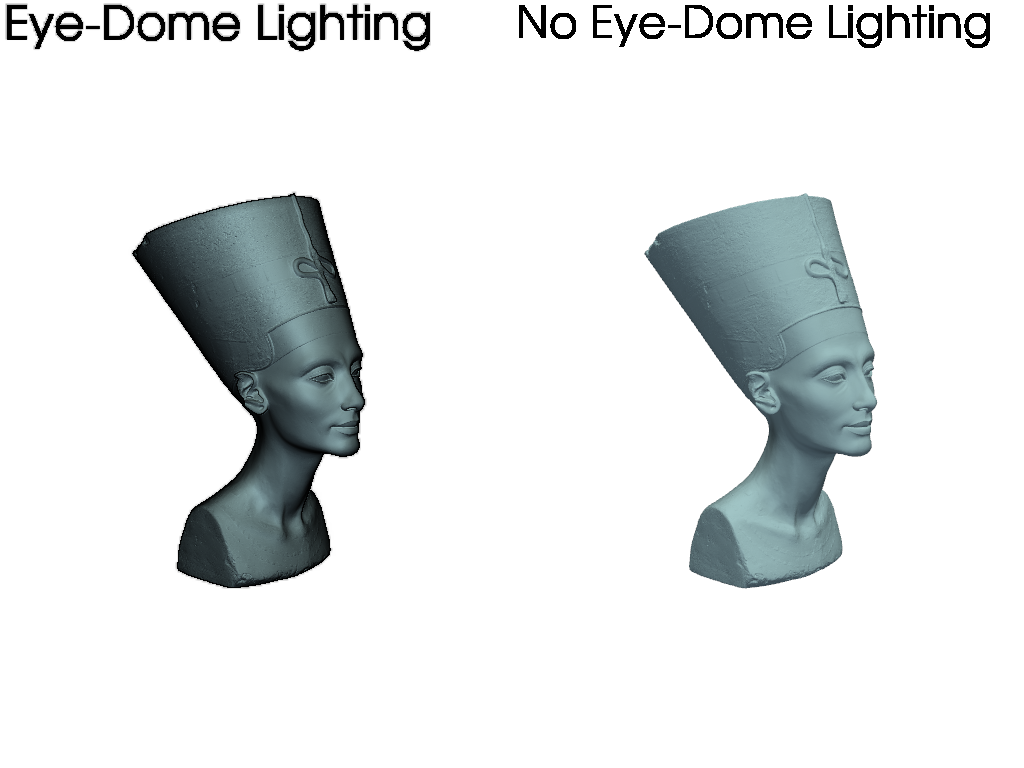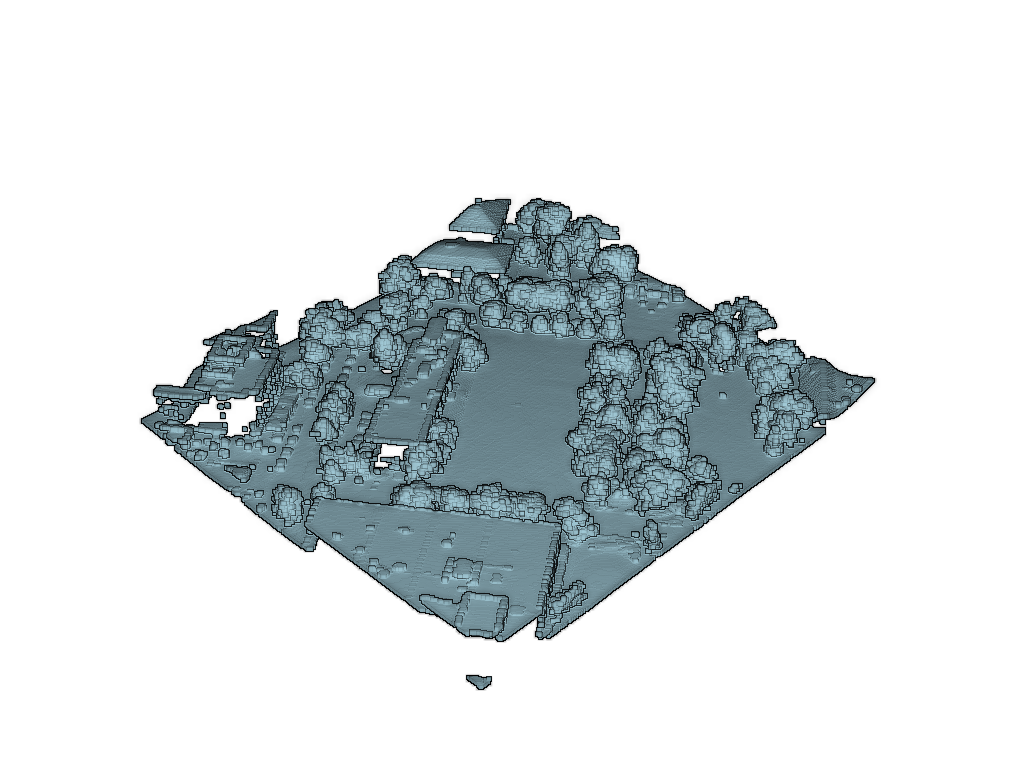Note
Go to the end to download the full example code.
Eye Dome Lighting#
Eye-Dome Lighting (EDL) is a non-photorealistic, image-based shading technique designed to improve depth perception in scientific visualization images. To learn more, please see this blog post.
from __future__ import annotations
import pyvista as pv
from pyvista import examples
Statue#
Eye-Dome Lighting can dramatically improve depth perception when plotting incredibly sophisticated meshes like the creative commons Queen Nefertiti statue:
nefertiti = examples.download_nefertiti()
nefertiti.plot(eye_dome_lighting=True, cpos=[-1, -1, 0.2], color=True)

Here we will compare a EDL shading side by side with normal shading
p = pv.Plotter(shape=(1, 2), border=False)
# With eye-dome lighting
p.subplot(0, 0)
p.add_mesh(nefertiti, color=True)
p.enable_eye_dome_lighting()
p.add_text('Eye-Dome Lighting', font_size=24)
p.camera_position = [-1, -1, 0.2]
# No eye-dome lighting
p.subplot(0, 1)
p.add_mesh(nefertiti, color=True)
p.add_text('No Eye-Dome Lighting', font_size=24)
p.camera_position = [-1, -1, 0.2]
p.show()

Point Cloud#
When plotting a simple point cloud, it can be difficult to perceive depth. Take this Lidar point cloud for example:
point_cloud = examples.download_lidar()
And now plot this point cloud as-is:
# Plot a typical point cloud with no EDL
p = pv.Plotter()
p.add_mesh(point_cloud, color='lightblue', point_size=5)
p.show()

We can improve the depth mapping by enabling eye dome lighting on the
renderer with pyvista.Renderer.enable_eye_dome_lighting().
# Plot with EDL
p = pv.Plotter()
p.add_mesh(point_cloud, color='lightblue', point_size=5)
p.enable_eye_dome_lighting()
p.show()

The eye dome lighting mode can also handle plotting scalar arrays:
# Plot with EDL and scalar data
p = pv.Plotter()
p.add_mesh(point_cloud, scalars='Elevation', point_size=5)
p.enable_eye_dome_lighting()
p.show()

Total running time of the script: (1 minutes 8.504 seconds)